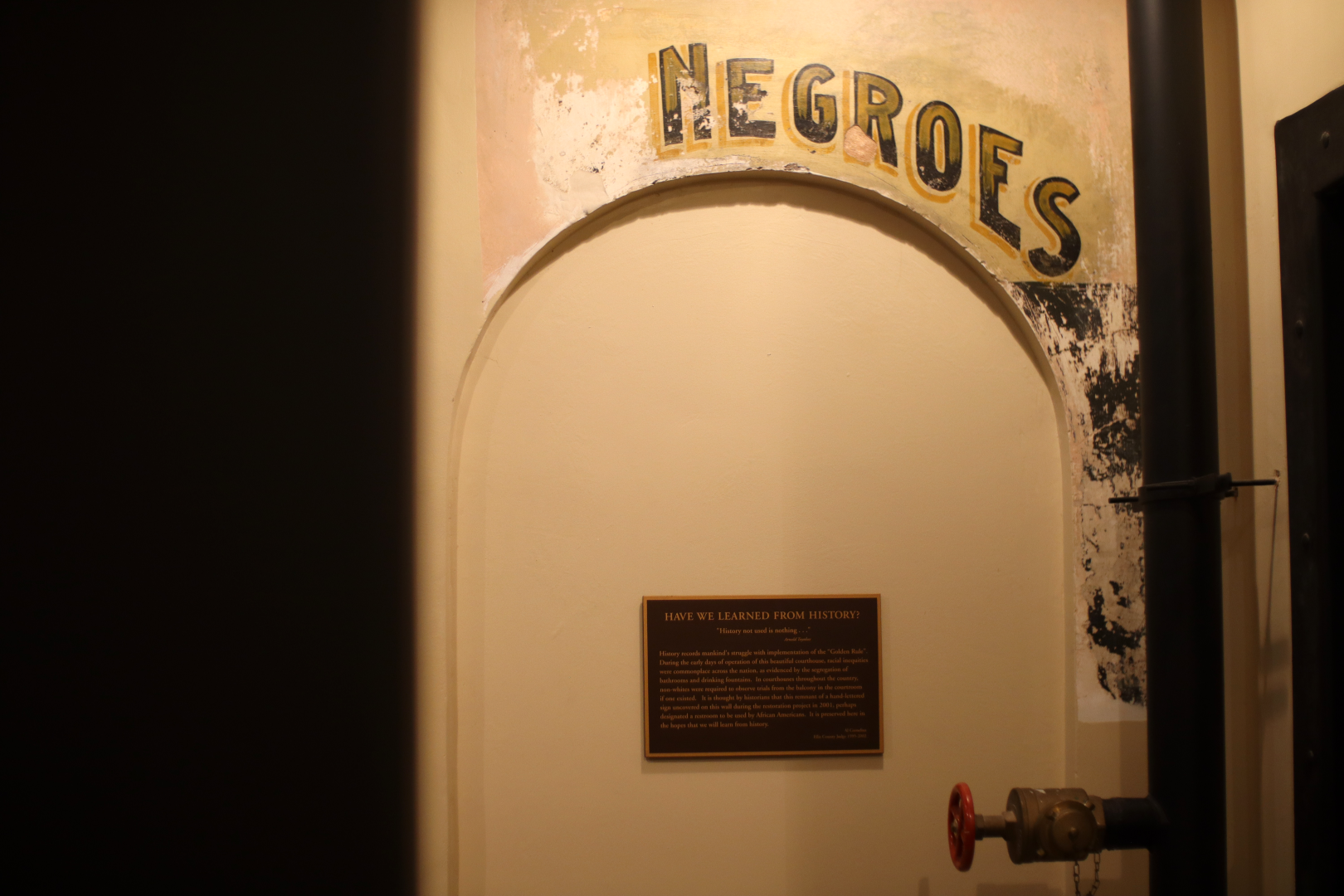
What you see here is the closed-off entrance to what was once a segregated restroom. Note that there is a missing word; this was not a Colored restroom, but a Whites-only one. During the courthouse restoration, this historic segregation sign was uncovered underneath multiple layers of paint, and those restoring the courthouse had to decide whether they would erase the sign or keep it for educational purposes. After a community-wide conversation involving the Waxahachie NAACP, residents ultimately decided to preserve the sign, along with a plaque posing the important question, “Have we learned from history?”
This sign was not an issue for more than 20 years until a controversy unfolded in 2020 that corresponded with the Black Lives Matter movement. At the time, the Constable’s Office was located just on the other side of this metal door. It just so happened that Ellis County’s only black elected official at that moment was the Constable for Precinct 3, who understandably did not want to see this sign in his place of work every day. He began working with the County Judge to find another office elsewhere, but unfortunately, certain media personalities picked up on these negotiations and exaggerated controversy where there was none between the parties involved. It wasn’t long before a narrative developed that the County Judge, acting out of racial prejudice, had deliberately relegated the Constable to the basement near the segregation sign. This media frame, of course, omitted the fact that the Constable’s Office had already been located in the basement long before either man took office. To make matters worse, a second chapter of the controversy unfolded when an activist snuck into the courthouse to cover up the historic segregation sign with black paint. The County Judge was identified as a suspect in the vandalism case under the far-fetched theory that he had been trying to erase evidence that the sign had ever been there. When tours of the Ellis County Historic Courthouse were first offered regularly in 2021, this historic segregation sign was not included on the tour because the investigation over the vandalism was still occurring at the time. Since then, the County Judge has been cleared as a suspect, the sign has been restored, and the Constable has moved into his new office. The person identified as the vandalism suspect has since passed away, allowing all involved parties to leave the controversy in the past.
All of the issues caused by the mere presence of this historic segregation sign demonstrate why it is important to preserve all of our history – even the aspects we may not be proud of. If modern media is able to create such a strong narrative, how much more can historians create narratives for a past that we cannot easily verify? Some historians might choose to whitewash history, while others might choose to exaggerate it – but both for purposes of creating a false narrative. In order to understand the past from a factual perspective, we must preserve our primary sources in context as much as possible, and that is why the Ellis County commissioners have chosen to continue preserving this sign as-is.